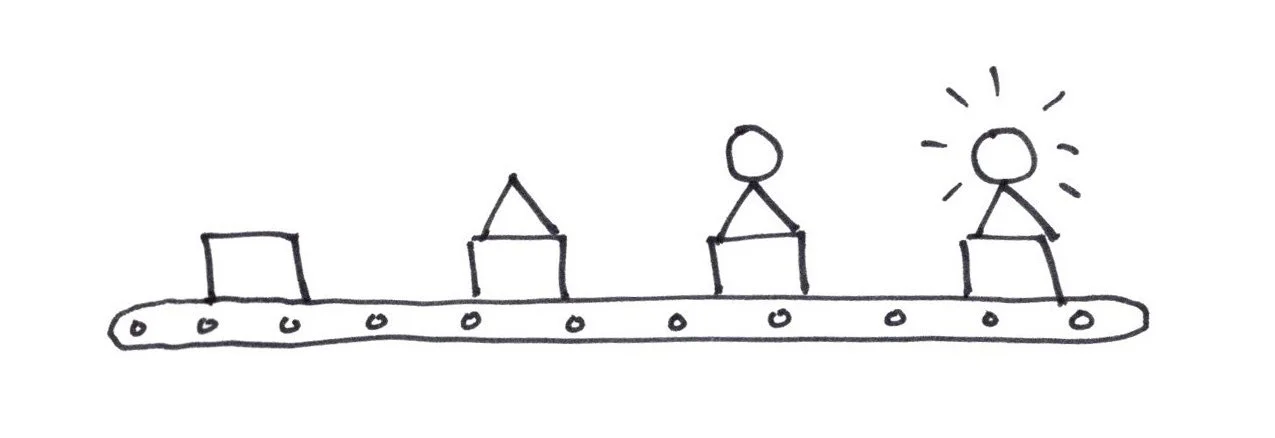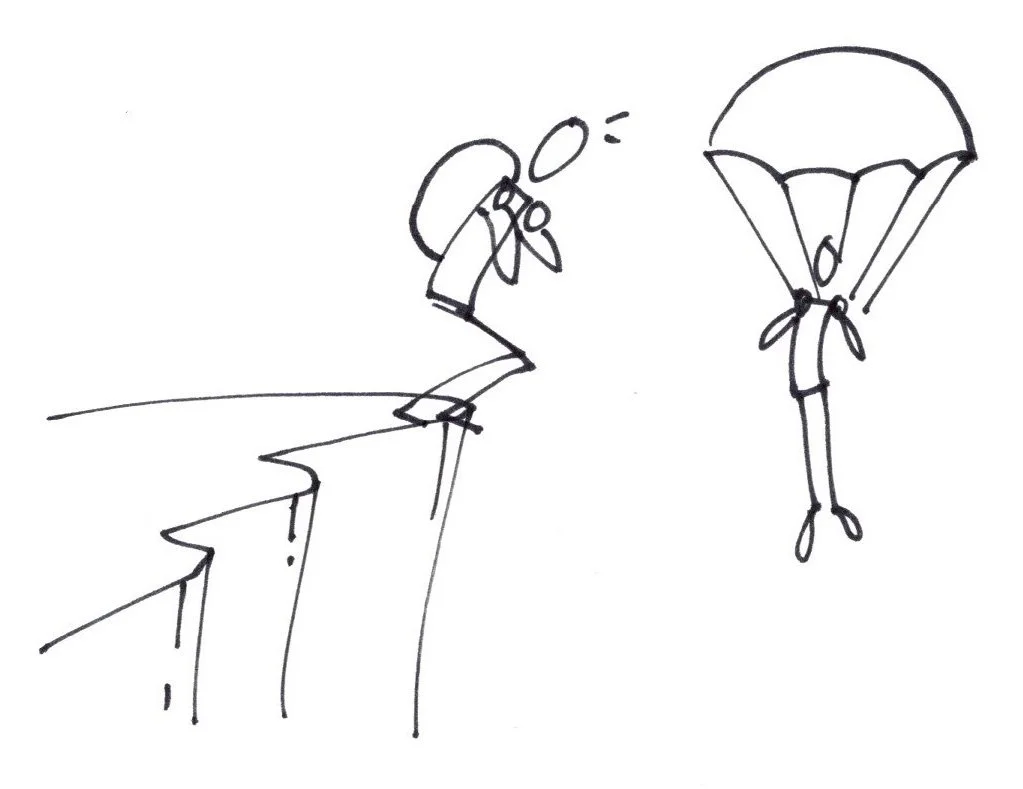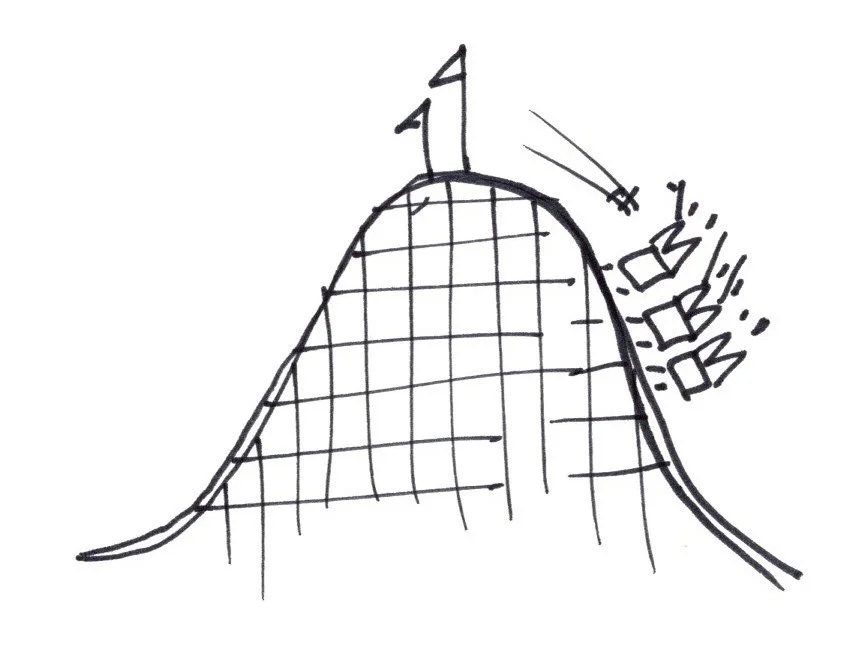Designing Workshops That Flow and Engage
Picture you’re in a workshop that feels… wrong. Chaotic. Disjointed. There’s no throughline: one session doesn’t seem to have anything to do with the previous session, or the one after. One minute, you’re deep in introspection during a quiet exercise, and the next moment you’re being asked to leap into a high-energy group activity without so much as a transition. It’s jarring, awkward, and it leaves you wondering where this is all going.
Now imagine instead being in a workshop where everything just clicks. The activities flow naturally from one to the next. You can feel the thought and care that has gone into designing the session. You’re able to stay fully engaged because it’s clear how each step will get the group closer to its goals.
This harmonious flow isn’t magic—it’s the result of intentional design. When it’s done really well, it’s like the agenda recedes into the background, giving way to organic conversations that naturally build on each other. It’s a lot easier than it sounds: a few guiding principles can ensure participants feel inspired and comfortable enough to engage deeply and work together.
Here are the keys to unlocking that flow, and why they matter so much for getting the best outcomes in group settings.
1. Avoid Sharp Mental Turns (They’re as Jarring as They Sound)
Created by Brian Tarallo
Imagine you’re calmly reflecting on an important question during a guided exercise, and then, boom, you’re thrown into an intense team-building game without warning. It’s like going from sipping tea to being hit with a fire hose.
Transitions that jar participants create discomfort and confusion. Allow each activity to build on the last. Pay attention to the energetic tone of each activity. Ease people from one mode of participation to the next. For example, if a group has just been blasted by dry PowerPoint presentations, have them do a pair-share, turning to the person next to them and reflecting on what they just heard, BEFORE beginning a large group discussion. It’s called “priming,” and this way, the energy transitions smoothly.
Smooth transitions make the whole process feel intentional and build trust with your group. They’ll appreciate feeling “guided” through the experience versus a game of 52-card pickup.
2. Build Step by Step, Like an Assembly Line
Created by Brian Tarallo
Every part of your agenda should work toward your goal. Think of it like building something on an assembly line—with each piece fitting together to form the final product.
Start broad. Begin by opening up the conversation or exploring general themes (this is your diverging phase). Then narrow the focus by refining ideas, focusing the energy, and driving toward decisions (this is your converging phase).
For example, if your goal is to create a project plan, you might start with a brainstorming activity to capture a wide range of ideas. Then you’d move into a prioritization exercise to identify what’s most important. Finally, you’d close with a collaborative action-planning session where each participant can see their role going forward.
Anything that doesn’t help move the group closer to the goal? Cut it. Your participants will thank you.
3. Trust First, Then Vulnerability
Created by Brian Tarallo
One of the fastest ways to derail a session is to ask people for vulnerability before they’re ready. Vulnerability isn’t something you can demand; it’s something you earn by building trust.
Start with activities that allow participants to feel safe and comfortable with each other. Simple icebreakers or light discussions can ease people in. Build a foundation where people feel included, seen, and valued. Then, as trust deepens, you can invite deeper connection and reflection.
For example, don’t open a session by asking someone to share their fears. I was once a participant in a group where the facilitator’s FIRST instruction to us was, “Turn to the person (a stranger) sitting next to you and share your most embarrassing moment.” Instant, automatic, and irreparable cringe. I was so stuck on that misstep that I missed the next thirty minutes of the workshop. Open by asking what excites them most about the work or by doing a fun and easy energizer that helps them connect with others. People need to feel supported before they can open up.
4. Energizers and Flow Keep Momentum High
Created by Brian Tarallo
Energy is contagious, and so is burnout. Workshops can often feel like roller coasters, with lots of hype at the start and a steep drop-off midway through. To keep energy flowing, it’s important to match the activities to the group’s energy level and build on it naturally.
For instance, right after lunch, when energy tends to dip, you might use a quick, upbeat energizer to recharge everyone. Once their energy rebounds, ease into an activity like journaling or small group work.
The trick isn’t about forcing people to always be “on”—it’s about paying attention to where they are emotionally and physically, and guiding the group at a pace that feels natural.
Pro tip: go low carb for lunch. I am absolutely ruthless when it comes to choosing the menu. No more sandwiches or pasta. Go for salads and proteins. You’ll see a measurable difference in your participants’ energy level.
5. Follow the Flow of Energy
Created by Brian Tarallo
Ever notice how hard it is to focus after a high-octane activity? Or how challenging it can be to shift into strategic planning after a meditative reflection? The key is to respect the flow of energy in the room.
Engaging group activities should feel like they naturally flow into the next stage of the workshop. For instance, after a calming body scan or visualization practice, you might ask participants to individually journal their thoughts (another example of priming.) From there, move into a small discussion group to process insights together. Each step should gently flow into the next, keeping participants in the moment.
Paying attention to energy signals means recognizing when the group needs a change of pace. If people seem antsy during quiet time, for example, it’s a signal that they’re ready for movement or discussion.
Why It Matters
Created by Brian Tarallo
When your sessions are designed with logical flow, smooth transitions, and intentional pacing, magic happens. Groups collaborate better, stay engaged longer, and trust the process. Instead of feeling drained or aimless, participants walk away feeling energized, connected, and knowing they made real progress.
Planning sessions like this takes care and attention, but the payoff is huge. The next time you’re designing a meeting or workshop, think of it not as a collection of random parts but as a thoughtful journey with purpose behind every step.
With a little intentionality, your sessions can go from “meh” to memorable. And perhaps, just perhaps, you’ll inspire your group not only to reach their goals but to enjoy the process along the way.
Here you go! A friendly and engaging blog post ready for your website and LinkedIn. Let me know if there's anything else you'd like to tweak or add!






